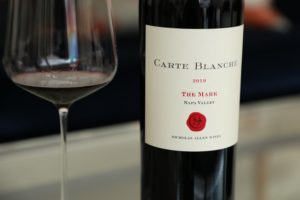
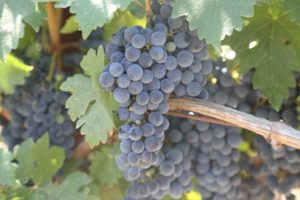 Carte Blanche Wine was founded and is owned by Nicholas Allen. Nicholas’s interest in wine grew during college at the University of Denver. He remembers building a small cellar at his first house in Washington Park and simultaneously nurturing an interest in food including hosting dinner parties. He was the ‘resident cork dork’ as he puts it.
Carte Blanche Wine was founded and is owned by Nicholas Allen. Nicholas’s interest in wine grew during college at the University of Denver. He remembers building a small cellar at his first house in Washington Park and simultaneously nurturing an interest in food including hosting dinner parties. He was the ‘resident cork dork’ as he puts it.
The first vintage of of Carte Blanche was in 2008; winemaker Luc Morlet (Morlet Family Vineyards) crafted the wines from 2008 through 2013. Nicholas met digital marketing consultant Steven Smith when Smith was working in wine sales at West Palm Wines in Florida. Smith introduced Nicholas to Luc; he learned a lot from Luc including his innate blending abilities and being introduced to special vineyard sites throughout parts of northern California.
In 2010 when looking to increase exposure for the young brand, Nicholas was introduced through a mutual friend to DJ Warner. DJ has since been instrumental in building the brand including direct to consumer sales and a careful and thoughtful approach to the right type of distribution. He has also been part of the philosophy that less is more; along with Nicholas reducing the number of bottlings produced and quantities. And in 2014 DJ’s wife, winemaker Helen Keplinger took over the winemaking for Carte Blanche and was their winemaker through the 2023 vintage.
An image on all of their wine labels is of a red wax seal containing Nicholas’s initials. This seal is in homage to Nicholas’s grandmother, Dorothy Dillon who gifted this to him around age 19. Dorothy hosted numerous hallmark and holiday events at her house and would always choose some of the finest wines from her cellar to celebrate with her family. Nicholas fondly remembers those times from his youth; invariably she would place a few drops of wine into the children’s glasses. But it was the conversations he recalls which meant more than the wine at the time; they would discuss each wine, the weather during that harvest, the winemaking but also important worldwide events which happened the same year that the bottle was produced.
And it was Dorothy who married Mr. Allen, Nicholas’s grandfather. The Allen family lived on Dunwalke Farm in Bedminster, New Jersey. It’s a cattle farm amidst an equestrian area of New Jersey that is known for fox hunting and until recently the U.S. Equestrian Team was located nearby.
A name like Carte Blanche implies trust, confidence, freedom and an innate desire to create something special. Their philosophy is like an open canvas to craft the best expression of each wine, while working with the nuances of every vintage. Vineyards are carefully selected for their terroir matching each variety to site as well from proven vineyards with strong pedigrees. These are balanced wines with plenty of aromatic and palate depth, even in their youth. And texturally they are highly appealing.
Select wines
Whites
The 2021 Carte Blanche Sonoma Coast Chardonnay UV Vineyard is made from 100% Wente clone. This wine was fermented and aged in French oak barrels for about 14 months. It is is medium gold in color; the diverse bouquet is immediately open and expressive with both stone fruit and secondary spices showing. It offers a honeyed note including honeycomb along with vanilla pudding, crème Brule, toffee, custard, hazelnut, dried straw, melon, apricot, yellow peach, pineapple and ripe mango. Those who have an affinity for smelling rich and sweet desserts will not be able to put this glass down. Its texture is creamy and supple without being heavy. The palate offers flavors of mango, yellow peach, pineapple, citrus, vanilla wafer, coconut, baked apple and some very light notes of popcorn butter. The rich and intense flavors are supported by its texture and bright acidity. This wine sports a noticeably long-lasting finish. It went through full malolactic fermentation, although based upon its overall character, one perhaps would not guess this was the case.
The UV Vineyard is named in honor of the late vineyard manager, Ulises Valdez Sr who planted Chardonnay and Pinot Noir on this cool weather property. The site is located only 6 miles as the crow flies from the Pacific Ocean, near Graton and Occidental in what locals’ call, ‘west county’. The first vintage of Chardonnay from this vineyard bottled under Carte Blanche was in 2015. Keplinger had already worked with the Valdez family for both Keplinger Wines and Kerr Cellars. And grapes from the UV Vineyard are sold to other premium producers including Paul Hobbs Winery and Aubert.
Reds
Carte Blanche purchases their Pinot Noir from the Sun Chase Vineyard in the Petaluma Gap of Sonoma County. They source four different clones of Pinot Noir from four blocks all differing in elevation ranging from 900 feet to 1,400 feet. Each of these clones is picked individually, then fermented (in 2021, 30% whole cluster) and aged for 18 months separate from the others in 40% new French oak barrels until the final blending decisions are made prior to bottling. The 2021 Carte Blanche Pinot Noir Sun Chase Vineyard is medium ruby in color; the bouquet is focused on fruit aromatics but is complemented nicely with lighter spice notes. We immediately noted that the bouquet reminded us of our grandmother’s old velvet lined cedar box which must have been at least 40 years old when she gifted it to us before she passed away. The bouquet also offers aromatics of white pepper, black raspberry, dried rose petals and as it evolves in the glass shows notes of dried herbs including sage. This wine offers flavors of raspberry, red cherry and a light dried orange peel note. The ripe and rounded tannins feel the same as running one’s fingers over soft velvet; they linger smoothly along with a very subtle barrel influenced sweetness.
Sun Chase Vineyard is 250 acres of which approximately 39 acres are planted to Pinot Noir (roughly 60%) and Chardonnay (roughly 40%) divided into 20 separate vineyard blocks. A number of mostly Sonoma County producers craft vineyard designate wines from this site. The vineyard is owned by Alex Guarachi; he purchased this property in 2013 and a year later acquired Meadowrock Vineyard on Atlas Peak in Napa Valley (with a physical winery on site).
The Carte Blanche The Mark was originally called the Proprietary Red. But it was a wine that was somewhat ‘lost’ due to its generic sounding name. DJ suggested they call it The Mark; the first vintage with the new name was in 2017. The 2019 Carte Blanche The Mark is a blend of 66% Cabernet Sauvignon, 20% Merlot, 11% Cabernet Franc and 3% Petit Verdot. This year the Cabernet Sauvignon was sourced from Beckstoffer’s Missouri Hopper Vineyard, the Cabernet Franc from Sage Ridge Vineyard above Lake Hennessy (owned by Judy Jordan of Jordan Winery), and the Merlot from Beckstoffer’s Orchard Vineyard in the Oak Knoll District. The bouquet immediately offers aromas of tobacco spice along with ripe dark plum, blackberry and boysenberry. The fruit aromas become more expressive as the wine has time to open in the glass. Some of the spice notes on the bouquet are also echoed on the palate. Its textural feel is a characteristic worth noting; the tannins are plush, ripe, rounded and chalky in their textural feel. And they are evenly distributed across the palate. This wine drinks extremely well in its youth; we tasted four years post vintage.
And in 2023, Carte Blanche began sourcing their Merlot for The Mark from one of the premier Merlot Vineyards in the Oak Knoll District – Blackbird Vineyards.
The 2019 Carte Blanche Beckstoffer Missouri Hopper Vineyard (Oakville) Cabernet Sauvignon (100% varietal from clones 337 and 4) is deep ruby and opaque in color; the bouquet is dark fruited including of plum and blackberry along with an earthy/dusty note, old cedar wood, tobacco spice, violets and graphite – with an almost rusting iron nuance. The palate offers mouth-filling flavors of blackberry and boysenberry but is complemented with a freshness of acidity. The palate reveals flavors of both red and darker fruits including of currant, blackberry and boysenberry. The finish lingers brightly with flavors of plum, dried tobacco spice, cedar and some dried herbs. Its savory dryness outlasts the fruit. This wine offers a textural density on the finish but with rounded and fairly silky tannins. It has plenty of depth yet a simultaneous balance. It was aged for 22 months in premium French oak barrels from coopers, Darnajou, Taransaud and Sylvain.
Tastings Brasswood
Private tastings of Carte Blanche are by appointment and are held in the Winemakers Den at Brasswood Winery located just north of St. Helena. This private room within the Brasswood Winery complex of buildings is a comfortable place to hang out; an hour can quickly turn into two with good friends and excellent wines. Formerly the St. Helena Factory Outlets, the property now features a number of tasting rooms, the physical winery, an art gallery and a restaurant and a gourmet deli.
This is a very unique Napa property. It is approximately 50 acres and straddles two sub appellations including Spring Mountain and St. Helena. While no grapes are currently planted on the property for commercial use, they have up to 20 acres to develop in the future. The property also comes with a variety of valuable permits – one being the extremely rare Napa permit to allow weddings on site.
This “campus” if you will, features four tasting rooms including the main tasting room where most walk-in visitors will taste wines), The Winemaker’s Den, an appointment only room across from the main tasting room, the Vintner’s Den just outside of the wine cave and one within the winery. The property allows a number of their custom crush wineries to host visitors.
Food is an integral part of the property. Brasswood Bar + Kitchen is a Gastro Pub; the large window behind the bar looks north towards the actual winery facility; you can watch harvest activities on the crush pad during September and October from your bar-stool seat! Their founding chef has Michelin three-star experience; he joined them previously from The Restaurant at Meadowood, also located in St. Helena. The sizable commercial kitchen easily has enough space to accommodate both the restaurant and the cafe’s needs. Weather permitting, guests can eat outside on the patio overlooking the grounds, a great place to see and be seen, inside in the booths or at the bar.
Some of the fresh ingredients used by chef are sourced directly from the property – from a culinary garden growing on the south side of the property.
The Carte Blanche tasting experience typically lasts a minimum of 90 minutes up to 2.5 hours for a more leisurely lunch and occurs outside on the Brasswood patio (weather permitting) or inside the restaurant. Aloft wines are poured in between each course.
We always recommend guests coming to Brasswood Estate to arrive early to spend some time browsing the grounds including The Shop at Brasswood + Mercantile. This small store offers a collection of hand selected products from around the globe – it is a unique shopping experience for this part of Napa Valley. Both men and women’s fashion, home décor, artisan jewelry, culinary tools, fine textiles, ceramics, hand-blown glass, specialty cosmetics and even a few electronics are available.
And this shop also contains wines from Brasswood wine partners as well as products from Brasswood Spirits, American whiskey, gin and vodka.
Tastings, Vintner’s Collective
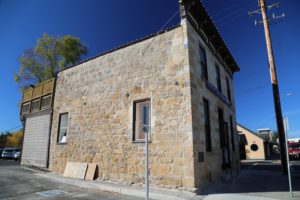
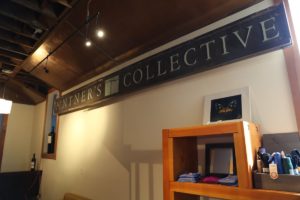 Carte Blanche is part of a coveted collection of wine producers represented at Vintner’s Collective, the city of Napa’s oldest collective tasting room. Vintner’s Collective showcases wines from a select group of mostly Napa Valley based brands – most of which do not have their own tasting rooms. And it’s not easy to have one’s wines represented here. Vintner’s Collective has an in-depth vetting process to make sure the wines match what their customers are interested in, including varieties, price points and wine styles.
Carte Blanche is part of a coveted collection of wine producers represented at Vintner’s Collective, the city of Napa’s oldest collective tasting room. Vintner’s Collective showcases wines from a select group of mostly Napa Valley based brands – most of which do not have their own tasting rooms. And it’s not easy to have one’s wines represented here. Vintner’s Collective has an in-depth vetting process to make sure the wines match what their customers are interested in, including varieties, price points and wine styles.
The tasting flights differ everyday which is certainly part of the appeal for visitors. Unless you are acutely tuned into the world of boutique Napa Valley producers, you may never have heard of any of the labels that are being poured, and that is not a bad thing. These wines represented are typically from producers who have a maximum production of 1,000 cases. A number of tasting flights are offered – geared towards all levels of wine interest and prior knowledge.
Walk-in customers are generally welcome if space allows but appointments can also be requested including for more private tastings hosted upstairs.
—
And private visits can be arranged, hosted either at the winery in Carneros where the Carte Blanche wines are produced or at the Keplinger tasting room in downtown Napa.
Total production varies each year but is often around 1,100 cases. As of our latest update to this review, the wines are distributed in 12 states including in California by Kimberly Jones Selections. And there is very limited distribution in parts of Japan, Korea, the U.K. and the Netherlands. For more information, to acquire current release bottlings, to join their mailing list or to schedule a private tasting, visit: www.carteblanchewine.com
FAMILY OWNED PROPERTIES IN FRANCE
Nicholas’s great grandfather Clarence Dillon moved to New York City from east Texas and founded the Wall Street investment banking firm, Dillon-Reid. This company was independently owned until the 1980s when it was sold to JP Morgan. The October 2, 1978 edition of Newsday indicated Dillon-Reid had been recently appointed as the financial advisor to the city of New York. Dillon purchased Château Haut-Brion in 1935; he died in 1979 at age 96. In 1953, his son, C. Douglas Dillon became ambassador of the U.S. in Paris during Eisenhower’s presidency and later served as Secretary of the Treasury for President Kennedy in the 1960s.
C. Douglas Dillon’s daughter Joan married Prince Charles of Luxembourg in 1967. Their son, (Clarence Dillon’s great grandson), Prince Robert of Luxembourg created Bordeaux based Clarence Dillon Wines in 2005. Château Haut-Brion is part of this family owned business which also includes Château La Mission Haut-Brion, Château Quintus in Saint-Émilion and founded in 2005, Clarendelle a negociant brand which is distributed in 80 countries.
Carte Blanche is not associated through ownership with these other family businesses.
Le Clarence
The well-regarded 2-star Michelin restaurant Le Clarence is located in the fashionable 8th arrondissement part of central Paris in an elegant mansion dating from 1884. This restaurant opened in late 2015 and by 2017 had already earned its two Michelin stars. Depending on the time of year, reservations for dinner should be made at least a month in advance. The restaurant is also open for lunch. Le Clarence is a regular on The World’s 50 Best Restaurants list. Dining here is a memorable experience, not only for the food, but for the ambiance and constant but not intrusive attention bestowed upon you by the wait staff. Allow at least three hours for dinner, with small plates regularly brought to your table for the duration of the meal.
And if you still have energy following the many courses, head over to the Eiffel Tower in the evening for a romantic interlude; it is located less than 10 minutes away by car.
The restaurant also published a very limited edition book titled, Christophe Pele Le Clarence by by Chihiro Masui & Richard Haughton.
The sounds of Le Clarence: the silverware from the kitchen, the soothing melody of the piano in the background and the mostly silent swish of men in suits constantly shuffling back and forth between the rooms.
I was dining alone. For one night I wish I was an old man at the table with a well groomed white beard – Clive Cussler-esque – gathering inquisitive glances from curious well-heeled patrons.
Every time the wooden box of white truffles was opened their grand smell permeated the entire room. And diners lost in the luxuriousness of the moment or their significant other would immediately glance up.
La Cave du Château
This wine shop and Le Clarence Restaurant are located on Avenue Franklin Delano Roosevelt, directly across from each other in the same building. La Cave du Château is a boutique wine shop specializing in premium French wines and spirits with the majority of the inventory from the Dillon owned wineries. A cellar located on a lower level features their most premium selections including wines from their three estates. The small but impressive wine cellar for Le Clarence is also located here; visitors can view it through several windows from the lower wine shop cellar.
WINERIES
Château Haut-Brion
Château Haut-Brion is currently undergoing a major renovation and construction of a new cellar. Construction is supposed to be completed sometime in 2026. Once completed, Château Haut-Brion will become the first carbon-neutral first-growth estate. And a library of wine and culinary books will be available for researches. We will visit once the winery has reopened.
The first known written mention of Haut-Brion, the property, dates from April 23, 1525 when the land was acquired through marriage; this early written history is contained within manuscripts housed in the Departmental Archives of Gironde. The word Brion in French refers to hill or mound; Château Haut-Brion features two hills rising 12 to 15 meters on its lands. And the first reference to its wines were from the wine ledger of King Charles II of England describing vintages 1660 and 1661 in regards to, “no less than 169 bottles of Hobriono were served to guests of the royal table”.
The wines long ago attracted praise; in 1677 the philosopher John Locke visited Bordeaux and Château Haut-Brion and described the wines as being “so revered in England”. More than a century later, Thomas Jefferson visited Château Haut-Brion in May of 1787 and declared the château one of four vineyards of prime quality. By the end of the 1700s the winery began making and bottling wine on a regular basis. In 1855 Château Haut-Brion was classified as one of the Premier Grand Cru producers of Bordeaux; there are only 5 such first growths. The wines have been distributed in the U.S. for many decades including in the 1800s where their strongest market was New Orleans.
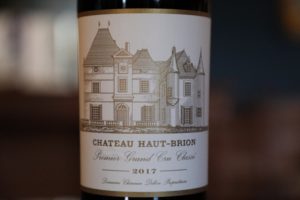 Château Haut-Brion is one of only four cooperages located at wineries in Bordeaux; the other three include Château Margaux, Château Smith-Lafitte and Château Lafite Rothschild. In 1961 they were the first chateau in Bordeaux to introduce stainless steel tanks in their cellar, designed by Jean-Bernard Delmas who worked 42 harvests for Domaine Clarence Dillon spanning from 1961 until 2003. The idea at the time was almost scandalous among the regional wine industry. And they are the only chateau of the first growths to not have a winemaking consultant, instead relying exclusively on their own full time employed technical team.
Château Haut-Brion is one of only four cooperages located at wineries in Bordeaux; the other three include Château Margaux, Château Smith-Lafitte and Château Lafite Rothschild. In 1961 they were the first chateau in Bordeaux to introduce stainless steel tanks in their cellar, designed by Jean-Bernard Delmas who worked 42 harvests for Domaine Clarence Dillon spanning from 1961 until 2003. The idea at the time was almost scandalous among the regional wine industry. And they are the only chateau of the first growths to not have a winemaking consultant, instead relying exclusively on their own full time employed technical team.
Only the ripe grapes are harvested for fermentation; they are separated from MOG (material other than grapes) and are fermented using only indigenous yeast. Temperature is carefully monitored during fermentation to prevent overheating. Following fermentation, wine earmarked for the Château Haut-Brion is gently transferred into new French oak barrels for twenty months.
Grapes from young vines harvested for the first four or five years, do not make it into the flagship or grand vin. And since 1997 Château Haut-Brion maintains a collection of hand-selected clones including from INRA and cuttings from existing vines for Cabernet Sauvignon, Cabernet Franc and Merlot. These clones were specifically selected for differences in yields, levels of sugar, color, tannins, aromas. Presently there are nearly 550 such vines under various stages of development planted on different parts of the property. Each year these vines are carefully monitored and over time, weaker or less desirable clones are removed. Like natural selection, this process is done by humans rather than nature.
The first vines planted on the estate were in 1423 and the first recorded vintage was in 1525. Despite such close proximity to each other, the wines of Château Haut-Brion tend to be more red-fruited while the wines of Château Mission Haut-Brion tend to be darker fruited. Château Haut-Brion’s vineyards are planted to 45% Cabernet Sauvignon, 40% Merlot and 15% Cabernet Franc.
Select wines
The 2017 Château Haut-Brion is a blend of 53% Merlot, 6.3% Cabernet Franc and 40.7% Cabernet Sauvignon. This wine is deep ruby in color; the bouquet is a forward expression focused on the purity of the fruit. The aromatics are somewhat briary and brambly along with red fruits including plum and raspberry. There is a also a darker tobacco spice note. As the bouquet evolves it reveals light baking spices and a note of chocolate. The palate sports flavors of plum, cherry and currant. The harmonious finish features primarily bright red fruits – it is lively and its vitality comes from its energetic acidity. The fruit eventually outpaces the feathery tannins and lingers with a note of dry tobacco leaf and a light toasted nuance from the barrel aging. Fresh, youthful and balanced, there is plenty of life ahead of this beauty.
Château Haut-Brion categorizes each vintage ranging from the following categories: a lesser year, an average year, a good year, a very good year, an outstanding year to a very outstanding year. They categorized the 2017 vintage as a very good year.
Château Haut-Brion Boutique
In 2021 the Château Haut-Brion Boutique opened next to Château Haut-Brion. This formal visitor reception and boutique wine shop is open to guests without needing a reservation. And it is this space where one meets prior to visiting either of the nearby chateaus.
Château La Mission Haut-Brion
In 1682 priests called Priests of La Mission or Lazarists oversaw the estate but did not own it (the order was founded by St. Vincent de Paul). The gothic chapel is the symbol of Château La Mission Haut-Brion; it was consecrated in 1698. The hand-painted stained glass windows are originally from Reims. And a door from the back of the church used to lead to the chateau but has long since been permanently covered. Due to the French Revolution the priests were forced to leave the property in 1789. To celebrate new ownership in 1821, the property was renamed to Château La Mission Haut-Brion.
During the 1800s the Chiapella family, ship owners from New Orleans purchased the chateau and developed markets in the U.S. for their wines. In 1862 Château La Mission Haut-Brion received a gold meal at the Universal Exhibition in London.
In what is a round about Napa Valley winery connection, on November 2, 1983 the Dillon family purchased Chateau La Mission Haut-Brion from Francis and Françoise DeWavrin-Woltner whose family purchased the property in 1919. The gold leafed iron-rod fences in the formal gardens were added during their ownership. The Woltners moved to Napa Valley to begin Chateau Woltner on the slopes of Howell Mountain in the old Brun & Chaix Winery. Later that winery became the home to Ladera and today is the home of 13th Vineyard by CADE Estate. And it should be noted that this sale involved Americans purchasing a French winery so that the Woltner’s, a French couple could move to the U.S and make wine.
In 1987 the grounds were updated, a new wine cellar and tasting room were built. In 2007 a 1,000 square meter chaix was built. In addition to their flagship Château La Mission Haut-Brion red bottling, the chateau also produces a dry white, called Château La Mission Haut-Brion Blanc with an unusually higher percentage of Sémillon in the blend (often 60-65%) with the remainder Sauvignon Blanc. The origins of this wine date back to 1927 when Frederic Woltner owned an adjoining but second domain called Clos Laville of Brion. He combined the two domains, Château La Mission Haut-Brion and Clos Laville of Brion in 1934 and produced this white wine under the name, Château Laville Haut-Brion. This wine was produced under this name until its last vintage in 2008 when its named was changed to Château La Mission Haut-Brion Blanc. Production is small, usually in the range of 550 to 650 cases annually.
A second red wine is called La Chapelle de la Mission with an average production of around 4,000 cases each year.
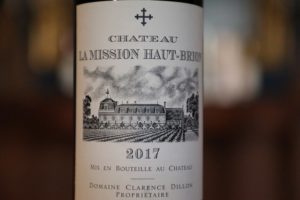 Château La Mission Haut-Brion oversees 25 hectares planted to the following variety percentages: Merlot 45%, Cabernet Sauvignon 45% and Cabernet Franc, 10%. This site is often 2 to 3 degrees higher in temperature than Medoc or Saint-Émilion. From downtown Bordeaux with no traffic driving time is only about 10 minutes.
Château La Mission Haut-Brion oversees 25 hectares planted to the following variety percentages: Merlot 45%, Cabernet Sauvignon 45% and Cabernet Franc, 10%. This site is often 2 to 3 degrees higher in temperature than Medoc or Saint-Émilion. From downtown Bordeaux with no traffic driving time is only about 10 minutes.
The vineyards are planted in gravelly soils eroded down from the Pyrenees mountains and carried by streams and rivers. These small gravel rocks help heat up the soil and in part protect from frost. Depending on layering, their size generally ranges from 1cm to 14 cm. Sand is located below the gravel soils and clay forms a lower layer. The soils are nutrient deficient, ideal for growing grape vines. Every plot is a piece of the vineyard puzzle, each identified by what is underground. And this puzzle changes ever years, reflected in their wines.
Grapes from the first 6 or 7 harvests are rarely included in Château La Mission Haut-Brion
It is interesting to note that one of France’s oldest railways dating to he 1850s bisects part of the their vineyards.
Some of their vineyard team has been working for the chateau for more than 30 years. Throughout the season three sortings are conducted within the vineyard; once the grapes are harvested by hand they are sorted again, both using vibrating tables and also an optical sorter. Stainless steel tanks are dived into two sections, an upper part for primary fermentation and a lower vat for malolactic fermentation. Wine is be drained from the upper tank to the lower tank via gravity using a hose. This process usually is done in the evening letting the wine run all night. The solids left in the upper tank are then transferred via a conveyor belt to a pneumatic press. The lower portion of the tanks feature a sloped drainage space, making it easier to clean.
Primary fermentations are usually fairly quick, often around 10 days. The wine is blended early in its aging process – immediately following secondary fermentation with the final blends created by the end of December following that year’s harvest. The cooperage at Château Haut-Brion produces about 80% of the barrels used at Château La Mission Haut-Brion. The wines are then aged between 19 and 23 months.
Select wines
The 2017 Château La Mission Haut-Brion is a blend of 56% Merlot, 4.4% Cabernet Franc and 39.6% Cabernet Sauvignon. This wine is deep ruby in color and nearly opaque in the glass; the bouquet offers darker spices including of tobacco and a light woodsy nuance. We tasted this wine 6 years post vintage and it was showing as very youthful. The bouquet needed time to peel back its layers of fruit including of plums, blueberries, raspberries, old cedar box and a note of chocolate. Noteworthy this wine’s youthful balance, already casting a graceful shadow. The palate offers flavors of cherry, plum, and currant. The tannins are rounded and resolved with a seamless interaction on the lively finish between fruit texture and acidity. The tannins are broadly distributed across the palate and have a very light grainy feel to their character.
Vineyards
Winemaking
Château Quintus, Bordeaux
Located on the coveted limestone plateau near the small village of Saint-Émilion in Bordeaux, the views from Château Quintus are panoramic and inspiring. The vistas are of the whose who chateau neighborhood, perhaps the most acclaimed, recognized and iconic swath of vineyard land on the planet. And from parts of the property one can see the famous steeple of Eglise Monolithe de Saint-Émilion in the village of Saint-Émilion.
A tower once stood on this hill offering protection to the citizens of nearby Saint-Émilion and the surrounding lands. Today a dragon is perched on the original site of the tower. The 2.5 ton metal sculpture of this mythical beast was created by London based wildlife artist Mark Coreth and dedicated in 2015. Like the tower, it is here to over its ‘protection’ over the nearby vineyards.
Château Quintus was purchased in 2011 by Domaine Clarence Dillon; at that time the name was changed from Château Tertre Daugay. The name Quintus pays homage to the Gallo-Romans who first planted the vineyards in and around Saint-Émilion; their tradition was to name a fifth child Quintus. Two more neighboring or nearby properties were later purchased including Château L’Arrosée in 2013 and another estate in 2021. According to estate manager Mariette Veyssiere it takes at least 10 years to determine the potential of vineyard blocks. Between these three properties there are 45 hectares and three physical wineries. This is one of the largest properties in Saint-Émilion.
Three wines are produced each year, all differentiated by terroir; Château Quintus is from the uppermost plantings growing on pure clay and limestone, Le Dragon de Quintus from the middle and lower slopes and the Saint-Émilion bottling from the sandy soils in the valley. The plateau is located in the Mediterranean Green Belt and the grounds at Château Quintus covering two hectares features a wide biodiversity including oak trees, hedgerows, cypress trees, wildflowers and numerous species of birds. With the assistance of a nursery, additional trees are planted on the property every year.
The vineyards are overseen by about approximately 20 full time employees. The practice sustainable agriculture and have used no insecticides since 2017. Cover crop is planted and then later tilled into the soils. Pheromone tags hang within every third row to discourage a certain type of predator. Three hectares are farmed biodynamically. The vineyard team notices more decreased pressure on the valley floor with its less biodiversity as compared to on the plateau. The average age of the vines are 35 years old; they are trellised in the Double Guyot system with three primary canes growing on each side – favorable for allowing for ample air flow among the vines and ideal for low to moderate vigor vines.
When visiting vineyards across the planet we always here a singular common theme expressed; that of the continued pressure of global warming. It is no different here. They are making less green harvests now, reducing the thinning of the leaves and adjusting practices in regard to more extremes in weather.
Both in the vineyard and in the cellar their focus is on terroir and technique. Winemaking here is a careful and thoughtful process. After the grapes are harvested and arrive at the winery, they are destemmed, hand stored followed by an additional sorting based density system (densimetric sorter). This system moves grapes through water which has previously been infused with a sugar solution of a certain density. Grapes of a certain ripeness sink to the bottom, are removed and then drained of the water. The less ripe grapes with a lower density along with material other than grapes (MOG) float to the surface and are discarded.
The Merlot is fermented in stainless steel vats while the Cabernet Franc is fermented in wood vats. They pump over during fermentation up to three times daily for a slow extraction. With a focus on the purity of the grapes, blending is conducted immediately following malolactic fermentation, with the idea to avoid less wood extraction in barrel. Three tank rooms and three barrel rooms are located within the winery.
The cooperage at Chateau Haut-Brion produces all their barrels, selecting toast levels specifically to match their needs. The flagship Château Quintus typically sees 30% new French oak during its aging, Le Dragon de Quintus about 20-25% new French oak and the Saint-Émilion about 10%. The Château Quintus bottling is aged for 12 to 18 months in oak with racking occurring approximately every three months and topping done every three weeks.
The bottle used for Château Quintus was designed by Prince Robert, modeled an old bottles of Château Haut-Brion dating from around 1850. An embossed seal on the shoulder of the bottle is similar to what was found an old bottle of Château Haut-Brion discovered in 2004 in an ancient cache near the island of Mayotte in the Indian Ocean north of Madagascar.
Visits to the chateau are by appointment and include a walk around the gardens, a stop at the dragon sculpture followed by a tour of the cellar and then a tasting of several current release wines. Total production is approximately 3,000 cases each year. The wines are distributed equally between Asia, Europe and the U.S. markets.
Select wines
The 2016 Château Quintus is a blend of 90% Merlot and 10% Cabernet Franc. This wine is deep ruby in color; the bouquet is sweetly fruited including aromas of raspberry, ripe dark cherry, red licorice and several layers of baking spices including cloves and an Asian five-star nuance. Some of these spice notes on the bouquet are mirrored on the palate. It offers flavors of red cherry, licorice, raspberry and cherry cola. It has depth in terms of both flavor and texture. The tannins are lightly grainy and persist for quite some time on the lengthy finish – ultimately outpacing the fruit. This wine shows as extremely youthful and a lovely freshness 7 years post vintage at the time of our tasting. Drink now but make sure you have enough bottles to hold for a decade or more. You will be rewarded for doing so. This wine was aged in 35% new French oak barrels and is 15% alcohol.
The 2016 Le Dragon de Quintus is a blend of 70% Merlot and 30% Cabernet Franc. The 2016 was an extremely late harvest, saved towards the end of the growing season by some warm days. This wine is deep ruby in color; the diverse and layered bouquet offers aromas of library book/parchment paper, old cedar box, dried herbs, white pepper, dark berries, black cherry, red plums, cassis and some baking spice notes including of nutmeg and cloves along with a sweet tobacco note. It is bright, fresh and lively across the palate based on its engaging acidity and red fruited flavors. These include currant, cherry and cranberry. The mouth watering and savory finish is supported by broadly distributed gravelly tannins. Both texture and fruit continue to parallel each other. This wine was aged in 29% new French oak barrels and is 15% alcohol.
Domaine Clarence Dillon
The headquarters of Domaine Clarence Dillon are located in Paris in the same mansion as the wine shop La Cave du Château and the restaurant, Le Clarence. The company also maintains offices (photos below) located a short walk or drive from Château La Mission Haut-Brion. Domaine Clarence Dillon is a member of the coveted Primum Familiae Vini, an organization composed of only 12 family-owned wineries from around the planet. From Napa Valley, Robert Mondavi Winery used to be a member until the family sold to Constellation Brands.
In 2010 Domaine Clarence Dillon and the Dillon family became founding sponsors of the now iconic wine museum, La Cité du Vin in Bordeaux. And in 2023, Domaine Clarence Dillon was the official 2023 wine partners of the Academy Museum of Motion Pictures.






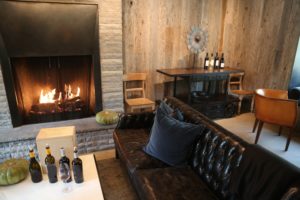

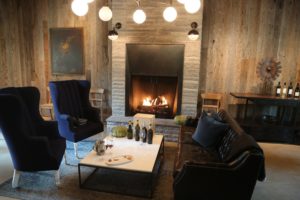
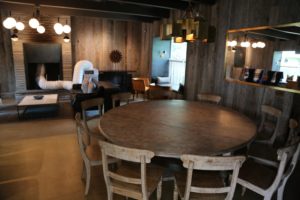
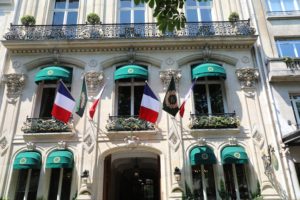
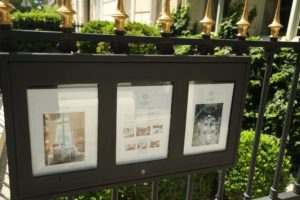
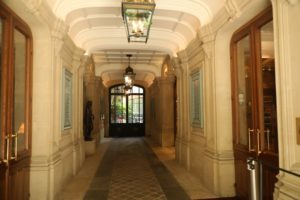
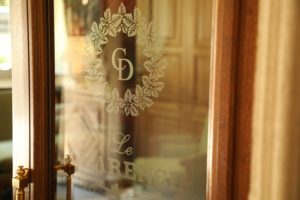
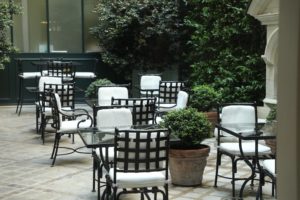
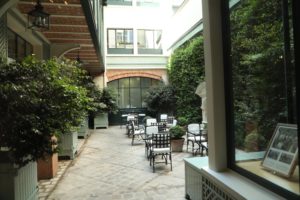
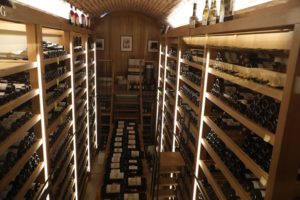
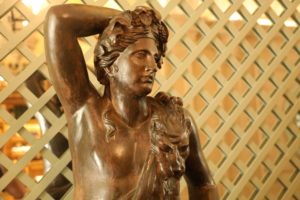
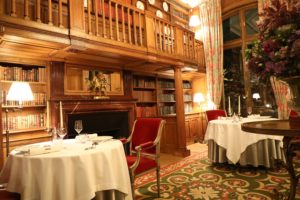
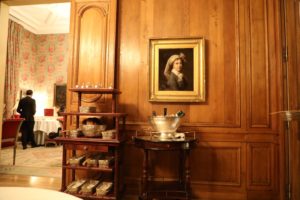
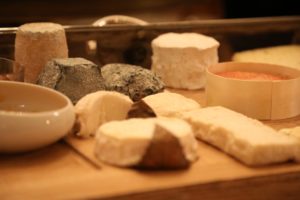
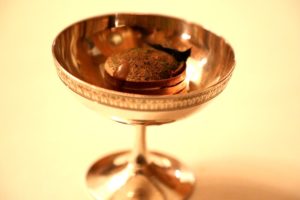
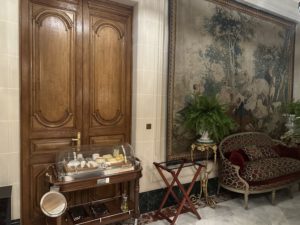
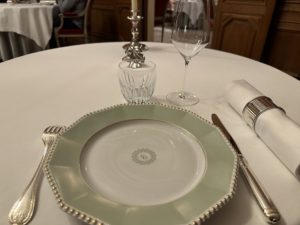
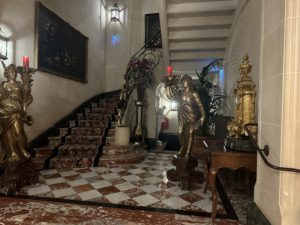
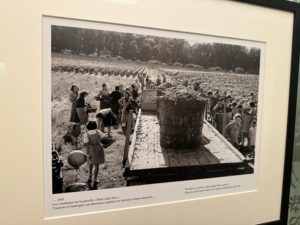
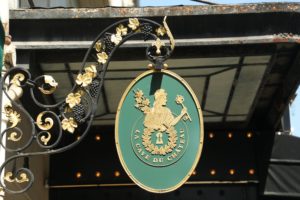
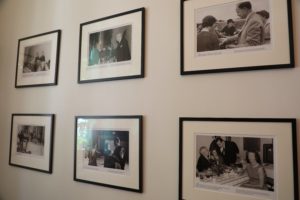
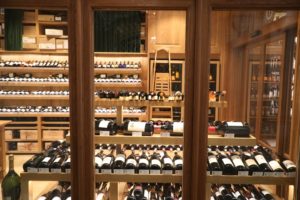
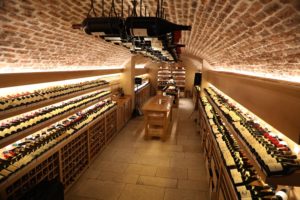
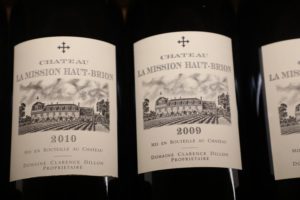
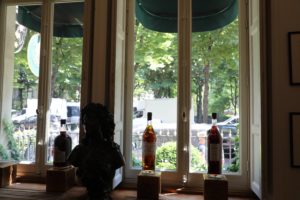
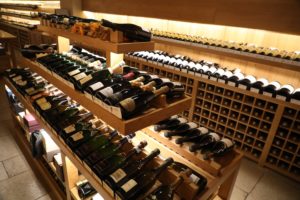
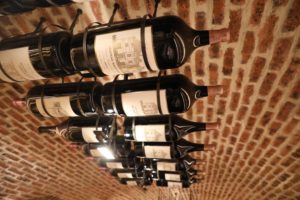
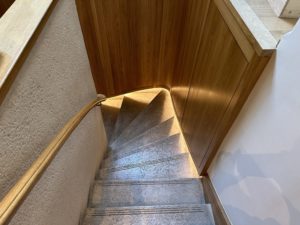
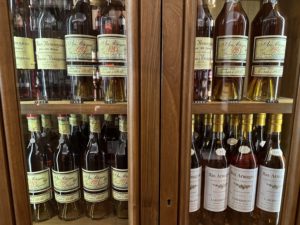
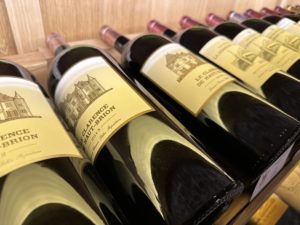
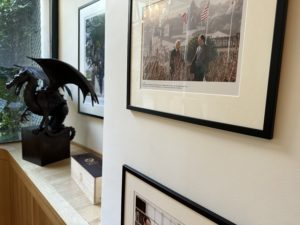
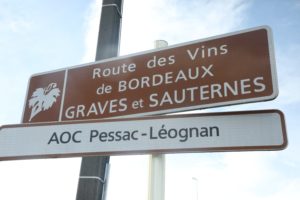
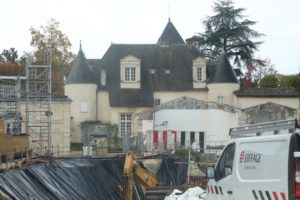
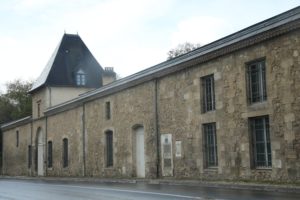
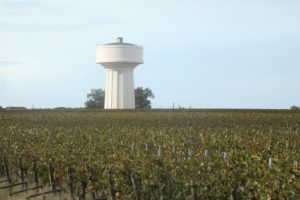
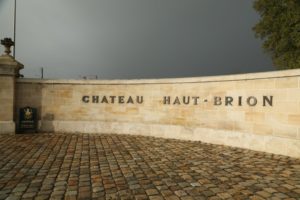
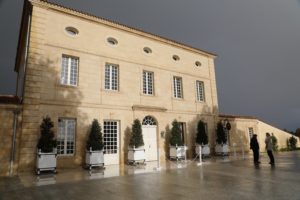
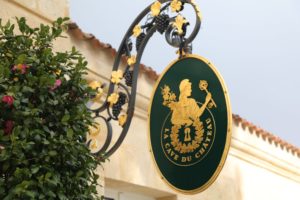
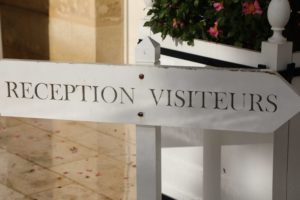
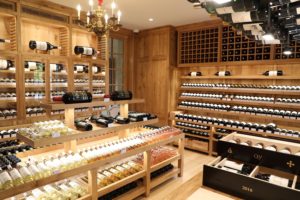
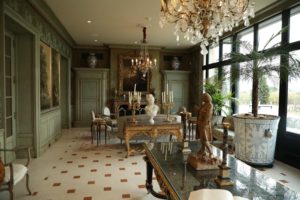
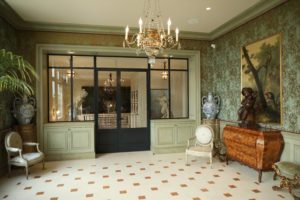
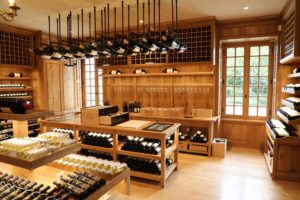
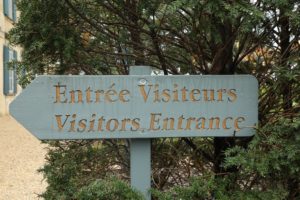
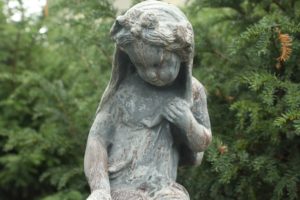
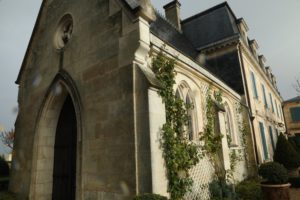
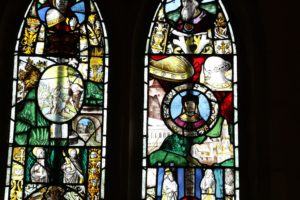
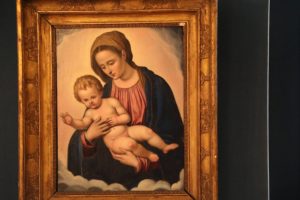
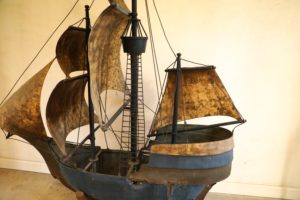
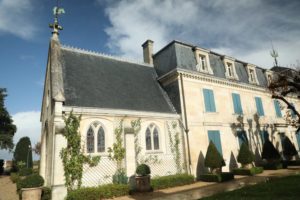
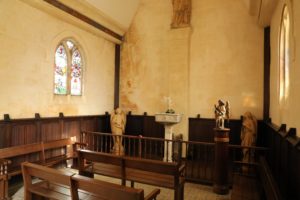
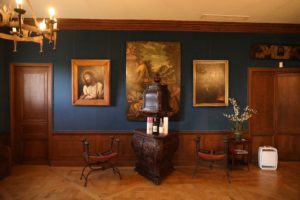
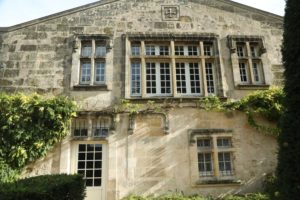
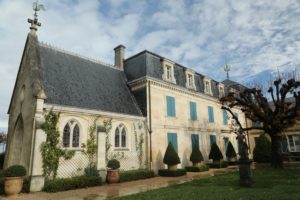
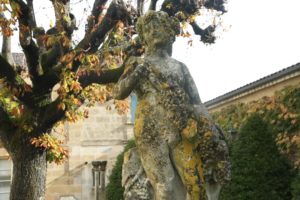
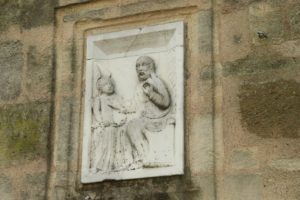
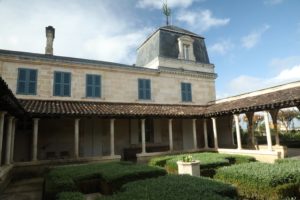
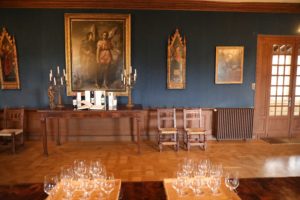
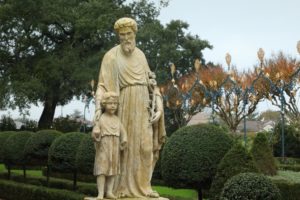
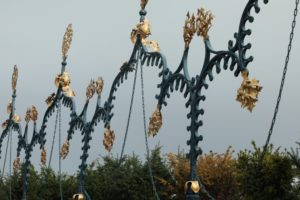
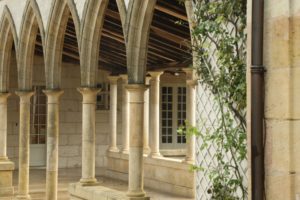
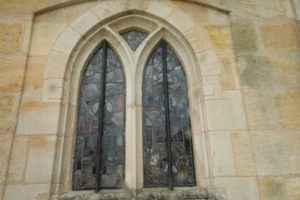
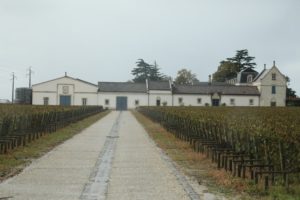
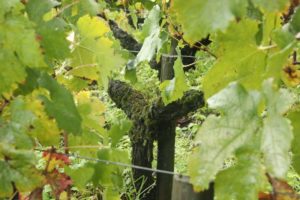
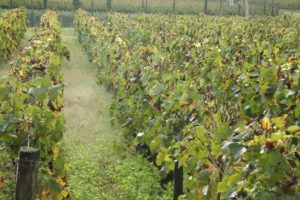
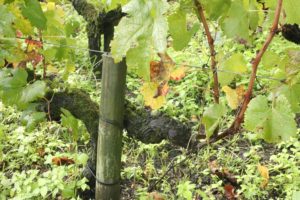
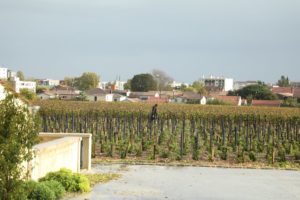
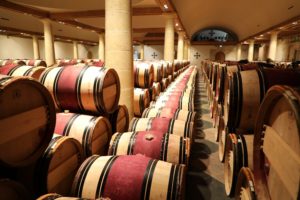
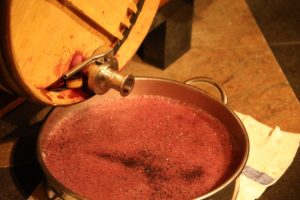
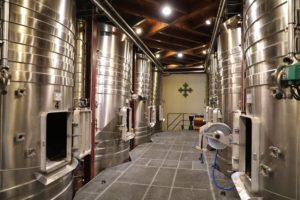
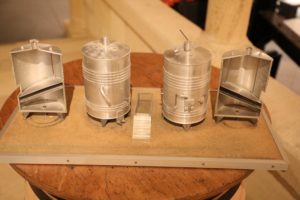
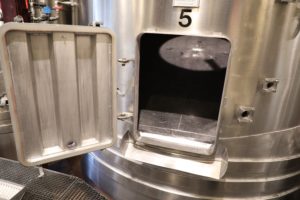
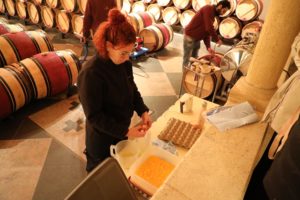
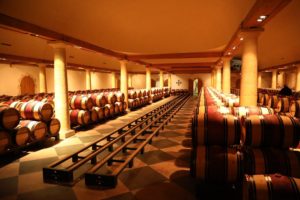
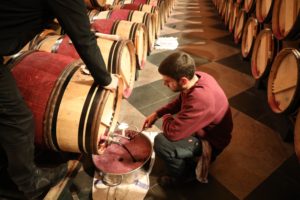
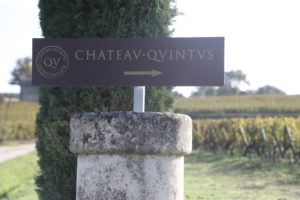
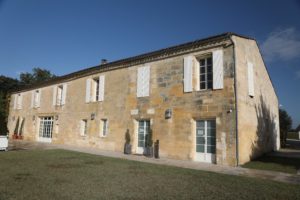
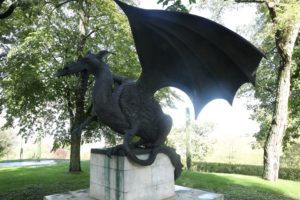
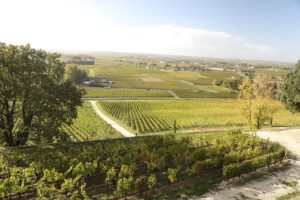
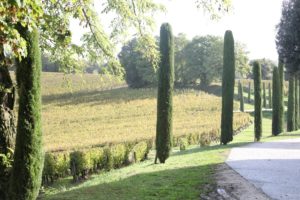
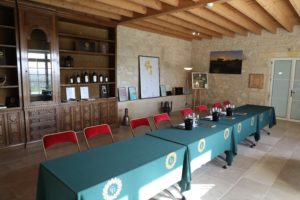
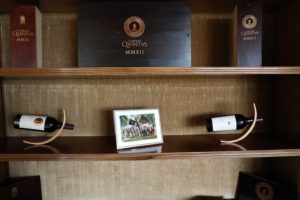
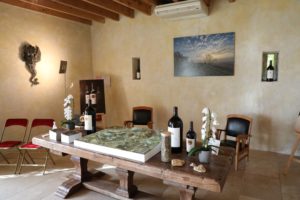
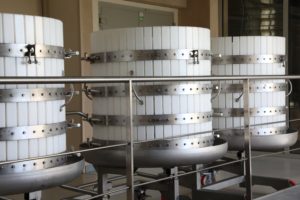
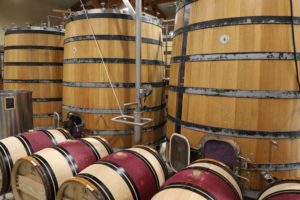
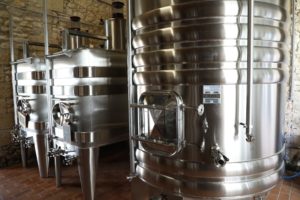
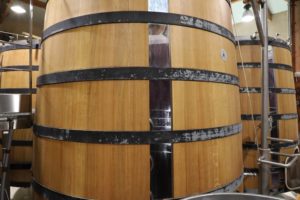
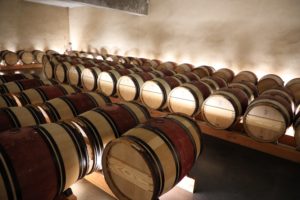
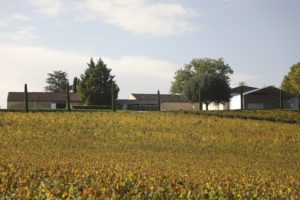
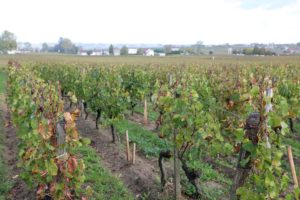
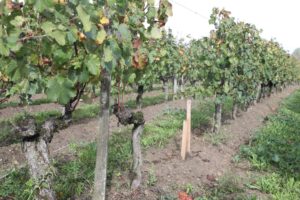
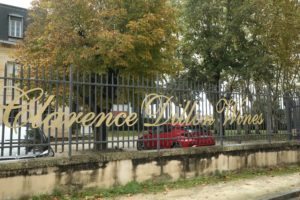
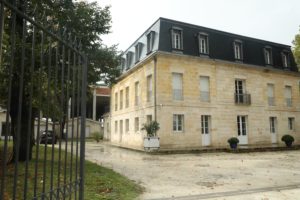
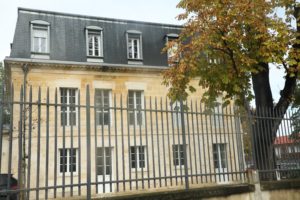
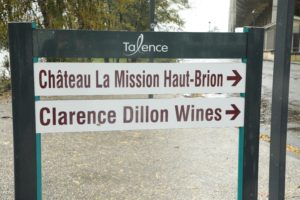
Leave a Reply